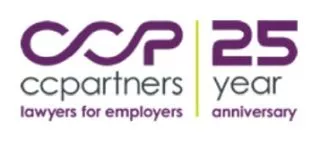The recent Ontario Superior Court decision in Boyle v. Salesforce.com, provides guidance for employers when it comes to the awareness of risks when effecting a termination of employment, specifically with respect to the potential implications of inducement, mitigation, and bonus entitlement. And, given last week's good-news article regarding termination clauses, we will avoid altogether any kind of deep dive into the (unenforceable) termination clause that was also part of this decision.
1. Inducement: Not All LinkedIn Messages Are Equal
The plaintiff argued he was induced to leave stable employment to join Salesforce and thus deserved an extended notice period. He pointed to a recruiter's LinkedIn message as Exhibit A.
The Court, however, was not impressed. Justice Brownstone held that merely being contacted by a recruiter and applying for a better-paying job doesn't qualify as inducement. There was no aggressive pursuit or wooing of any kind. Even if there had been a whisper of inducement, it would have been long diluted by the plaintiff's eight years of subsequent employment.
Employer Lesson: Unless you're actively dangling the keys to the kingdom to lure someone away from secure employment—think big promises, relocation packages, or gold-plated onboarding—you're likely in the clear. But be careful with language during recruitment: enthusiastic onboarding can still come back to haunt you if the employee is cut loose early in their tenure.
2. Mitigation: Retraining or Retrenching?
Employers will often make argument at trial that a plaintiff has failed to mitigate their damages. The onus of proof for such a claim – which, when successful, can reduce the damages awarded for reasonable notice – lies with the employer, who must show that the plaintiff's efforts were not reasonable in the circumstances. Unfortunately, this has been demonstrated to be a pretty high bar for employers to clear.
In this case, after termination, the plaintiff applied to 18 jobs over three months. Then, rather than continuing to apply, he decided to "upskill" — a euphemism for retraining — and paused his job search.
Salesforce, naturally, took issue. They claimed he could've walked and chewed gum — or applied and retrained — at the same time. They also argued he failed to apply for EI and, crucially, refused to provide his 2023 Notice of Assessment (until he relented a mere two days before the motion hearing).
Despite Salesforce's attempts to paint the plaintiff's retraining as unreasonable, the Court sided with the plaintiff: retraining was reasonable in a competitive tech market, especially for someone pushing 50 in a field where younger candidates were saturating job postings.
However, Salesforce won on the Notice of Assessment front. The refusal to disclose this basic mitigation document was, to quote the Court, unjustified. The result was three-month reduction in the notice period, from 11 months down to 8.
Employer Lesson: Always ask for mitigation documentation early and often. If the employee refuses to disclose basic income information like their Notice of Assessment, raise it with the court. Courts are prepared to draw adverse inferences — but only if you've done your homework and asked nicely (and on the record).
3. Bonus Entitlement: Clear as Mud (Unless You Draft It Properly)
Like many employers, Salesforce claimed the plaintiff wasn't entitled to either his 2023 bonus or any bonus during the notice period, relying on wording in the bonus plan that said you had to be an "active employee" on the bonus payout date to qualify.
Unfortunately for Salesforce, the Court found that a number of important steps were missed in their attempt to rely on this wording:
- They never gave the plaintiff a copy of the bonus plan.
- They had no record of him ever acknowledging the plan.
- They didn't attach it to his employment contract.
- They didn't present reliable calculations for what the 2023 bonus would have been had he stayed employed.
In response the Court awarded him:
- A full bonus for 2023 based on his 2022 figure, minus the pre-payment he received.
- A pro-rated bonus for the notice period (10% of his salary).
Justice Brownstone leaned heavily on Matthews v. Ocean Nutrition and Poole v. Whirlpool, emphasizing that employees terminated without cause are entitled to what they would have earned during the notice period — bonuses included — unless there's a clear and enforceable clause that says otherwise. In this case, Salesforce's bonus plan wasn't just not enforceable — it wasn't even properly communicated.
Employer Lesson: A bonus plan is only enforceable if it's both clearly written and clearly communicated. Require signed acknowledgements. Attach the plan to the employment contract. Make it easy to prove that employees saw and agreed to the terms. If you don't, don't expect a court to back you up.
In the end, Boyle v. Salesforce reminds us that employment law – whether in recruiting, contractual drafting or the execution of an employment termination – requires precision and a comprehensive approach. As always, the team at CCPartners is here to assist with the drafting of employment agreements, revising bonus plan language, establishing mitigation protocols, or training managers on proper termination etiquette.
The content of this article is intended to provide a general guide to the subject matter. Specialist advice should be sought about your specific circumstances.


